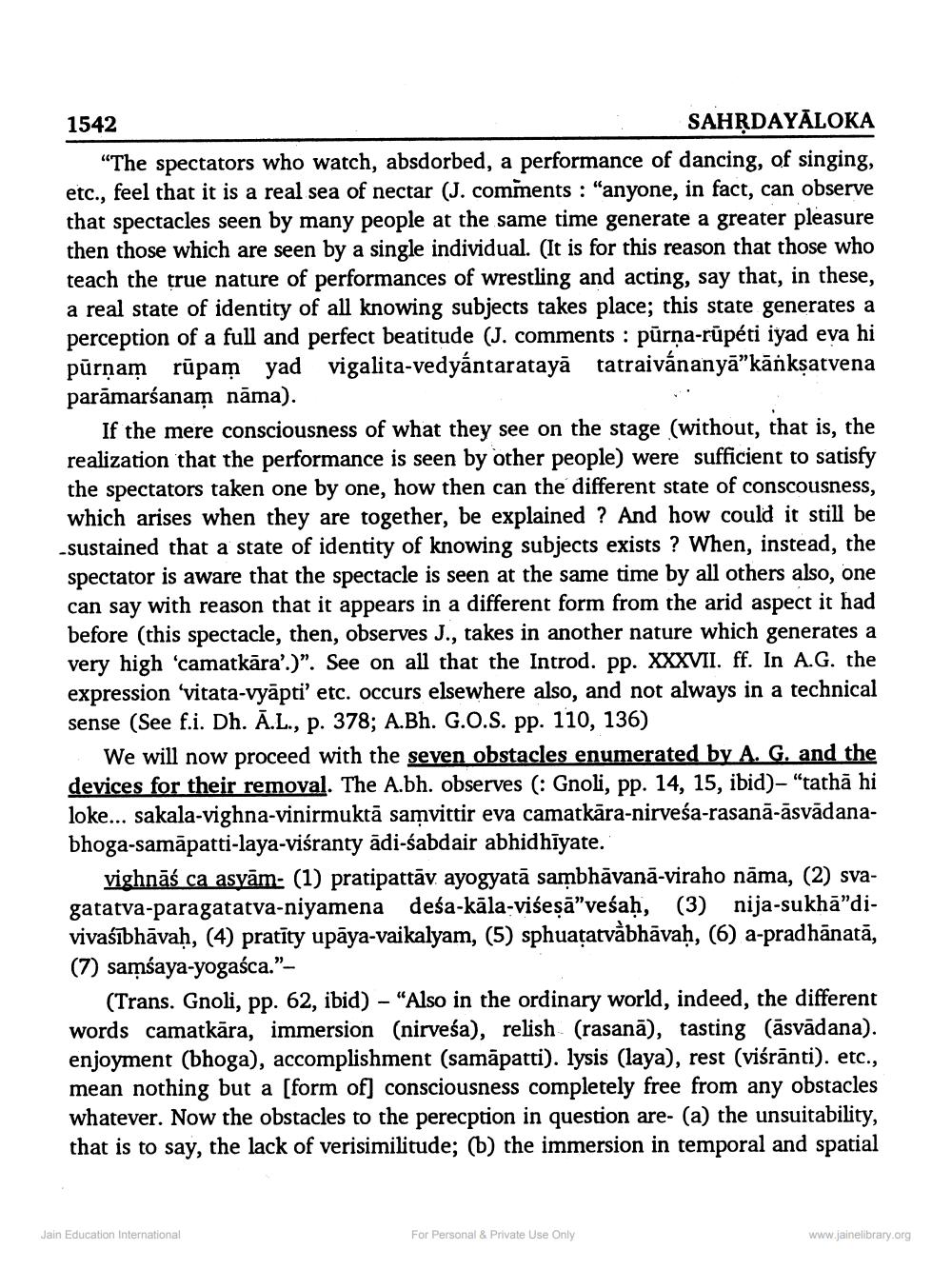________________
1542
SAHRDAYĀLOKA “The spectators who watch, absdorbed, a performance of dancing, of singing, etc., feel that it is a real sea of nectar (J. comments : "anyone, in fact, can observe that spectacles seen by many people at the same time generate a greater pleasure then those which are seen by a single individual. (It is for this reason that those who teach the true nature of performances of wrestling and acting, say that, in these, a real state of identity of all knowing subjects takes place; this state generates a perception of a full and perfect beatitude (J. comments : pūrņa-rūpéti iyad eva hi pūrņam rūpam yad vigalita-vedyántaratayā tatraivánanyā”kānkșatvena parāmarśanam nāma).
If the mere consciousness of what they see on the stage (without, that is, the realization that the performance is seen by other people) were sufficient to satisfy the spectators taken one by one, how then can the different state of conscousness, which arises when they are together, be explained ? And how could it still be sustained that a state of identity of knowing subjects exists? When, instead, the spectator is aware that the spectacle is seen at the same time by all others also, one can say with reason that it appears in a different form from the arid aspect it had before (this spectacle, then, observes J., takes in another nature which generates a very high 'camatkāra'.)”. See on all that the Introd. pp. XXXVII. ff. In A.G. the expression 'vitata-vyāpti' etc. occurs elsewhere also, and not always in a technical sense (See f.i. Dh. Ā.L., p. 378; A.Bh. G.O.S. pp. 110, 136)
We will now proceed with the seven obstacles enumerated by A. G. and the devices for their removal. The A.bh. observes (: Gnoli, pp. 14, 15, ibid)- "tathā hi loke... sakala-vighna-vinirmuktā samvittir eva camatkāra-nirveśa-rasanā-āsvādanabhoga-samāpatti-laya-viśranty ādi-sabdair abhidhīyate.
vighnāś ca asyām- (1) pratipattāv ayogyatā sambhāvanā-viraho nāma, (2) svagatatva-paragatatva-niyamena deśa-kāla-viśeşā”veśaḥ, (3) nija-sukhā”divivaśībhāvaḥ, (4) pratīty upāya-vaikalyam, (5) sphuațatvàbhāvaḥ, (6) a-pradhānatā, (7) sambaya-yogaśca.”
(Trans. Gnoli, pp. 62, ibid) – “Also in the ordinary world, indeed, the different words camatkāra, immersion (nirveśa), relish (rasanā), tasting (āsvādana). enjoyment (bhoga), accomplishment (samāpatti). lysis (laya), rest (viśrānti). etc., mean nothing but a [form of] consciousness completely free from any obstacles whatever. Now the obstacles to the perecption in question are- (a) the unsuitability, that is to say, the lack of verisimilitude; (b) the immersion in temporal and spatial
Jain Education International
For Personal & Private Use Only
www.jainelibrary.org




